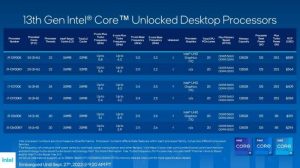
E-books for learning programming sets the stage for this enthralling narrative, offering readers a glimpse into a story that is rich in detail with entertaining interactive style and brimming with originality from the outset.
Embark on a journey through the digital realm of programming education, where e-books serve as the guiding light for beginners and enthusiasts alike.
E-books for Learning Programming
E-books have become an essential resource for individuals looking to learn programming due to their convenience and accessibility. They offer a wide range of benefits that can greatly enhance the learning experience for beginners in the field.
Importance of E-books in Learning Programming
E-books provide a flexible learning environment that allows beginners to study programming concepts at their own pace. They offer interactive features such as code examples, exercises, and quizzes that help reinforce learning. Additionally, e-books are often updated regularly to keep up with the latest trends and technologies in the programming world.
Advantages of E-books over Traditional Learning Resources
- E-books are easily portable and can be accessed on various devices, allowing learners to study anytime, anywhere.
- Interactive features in e-books make learning programming more engaging and effective compared to traditional textbooks.
- E-books often include multimedia elements like videos and interactive simulations to help explain complex concepts in a more visual and interactive way.
- Cost-effective nature of e-books compared to traditional printed materials makes them a more affordable option for beginners.
Computer Repair and Consulting
When it comes to maintaining optimal computer functionality, the role of computer repair and consulting services cannot be understated. These professionals play a crucial role in ensuring that your computer runs smoothly and efficiently, addressing any issues that may arise along the way.
Common Computer Issues
- Viruses and Malware: These malicious programs can wreak havoc on your computer, causing slow performance, data loss, and security breaches.
- Hardware Failures: Issues with components such as hard drives, RAM, or motherboards can lead to system crashes and data loss.
- Software Glitches: Problems with operating systems or applications can result in crashes, freezes, and error messages.
- Networking Problems: Issues with internet connectivity or network configurations can hinder your ability to access online resources.
Benefits of Professional Computer Repair
- Expertise: Professional technicians have the knowledge and experience to diagnose and fix a wide range of computer issues efficiently.
- Time-Saving: By hiring professionals, you can avoid the trial-and-error process of DIY solutions and get your computer back up and running faster.
- Warranty Protection: Many repair services offer warranties on their work, providing you with peace of mind in case the issue reoccurs.
- Data Safety: Professionals take precautions to ensure that your data is protected during the repair process, reducing the risk of data loss.
Data Communication
Data communication is the process of transferring data electronically from one place to another. In the realm of computers, data communication plays a crucial role in enabling devices to share information and communicate effectively over networks.
Data Communication Technologies
- Ethernet: A commonly used technology for wired local area networks, providing high-speed data transfer over cables.
- Wi-Fi: Wireless technology that allows devices to connect to a network without the need for physical cables.
- Bluetooth: Enables short-range communication between devices, such as connecting a smartphone to a wireless speaker.
- 4G and 5G: Mobile network technologies that allow smartphones and other devices to access the internet and communicate wirelessly.
Impact of Effective Data Communication on Network Performance
Effective data communication is essential for ensuring optimal network performance. When data is transmitted efficiently and accurately, it reduces latency and improves overall speed and reliability of the network. This leads to smoother data transfer, faster response times, and enhanced user experience.
Computers E-Books
When it comes to learning about computers, e-books are a fantastic resource to expand your knowledge of computer systems and technologies. Whether you’re a beginner looking to explore the world of computer science or a seasoned pro wanting to stay up-to-date with the latest advancements, there’s a wealth of e-books available to cater to your needs.
Top E-Books for Beginners
- “Computer Basics Absolute Beginner’s Guide” by Michael Miller – This e-book covers the fundamental concepts of computers and is perfect for those just starting their journey into the world of technology.
- “Code: The Hidden Language of Computer Hardware and Software” by Charles Petzold – A great read for beginners interested in understanding how computers work from the ground up.
- “The Elements of Computing Systems: Building a Modern Computer from First Principles” by Noam Nisan and Shimon Schocken – Ideal for those looking to delve deeper into the inner workings of computers and gain hands-on experience.
Graphics and Multimedia

Graphics and multimedia play a crucial role in computer technology by enhancing user experience, conveying information effectively, and enabling creative expression. Understanding graphics and multimedia concepts is essential for aspiring programmers to develop visually appealing and interactive applications.
Software Tools for Graphics and Multimedia Development
When it comes to creating graphics and multimedia content, there are several software tools available that programmers can utilize. Some examples include:
- Adobe Photoshop: A popular tool for image editing and graphic design.
- Adobe Illustrator: Ideal for creating vector graphics and illustrations.
- Blender: An open-source 3D modeling and animation software.
- Unity: A game development platform that supports 2D and 3D graphics.
- Adobe Premiere Pro: Used for video editing and post-production.
Computers Hardware

Computer hardware refers to the physical components of a computer system, including the components that can be seen and touched. These components work together to enable the computer to perform various functions.
Types of Computer Hardware
- Processors: The central processing unit (CPU) is the brain of the computer, responsible for executing instructions and performing calculations.
- Memory: Random Access Memory (RAM) provides temporary storage for data and instructions that the CPU can quickly access.
- Storage Devices: Hard drives and solid-state drives store data permanently on the computer, allowing for long-term storage of files and programs.
Importance of Hardware Compatibility
Hardware compatibility is crucial when building or upgrading computer systems to ensure that all components work together seamlessly. Incompatible hardware can lead to performance issues, system crashes, and other problems.
Outcome Summary
As we close the chapter on e-books for learning programming, it’s evident that these digital companions are not just sources of knowledge, but gateways to a world of endless learning possibilities in the realm of programming.
Answers to Common Questions
Are e-books more beneficial than traditional learning resources for programming?
Yes, e-books offer portability, interactivity, and updated content compared to traditional textbooks.
How can e-books enhance the learning experience for programming beginners?
E-books provide engaging visuals, interactive exercises, and real-world examples to aid in better understanding of programming concepts.





